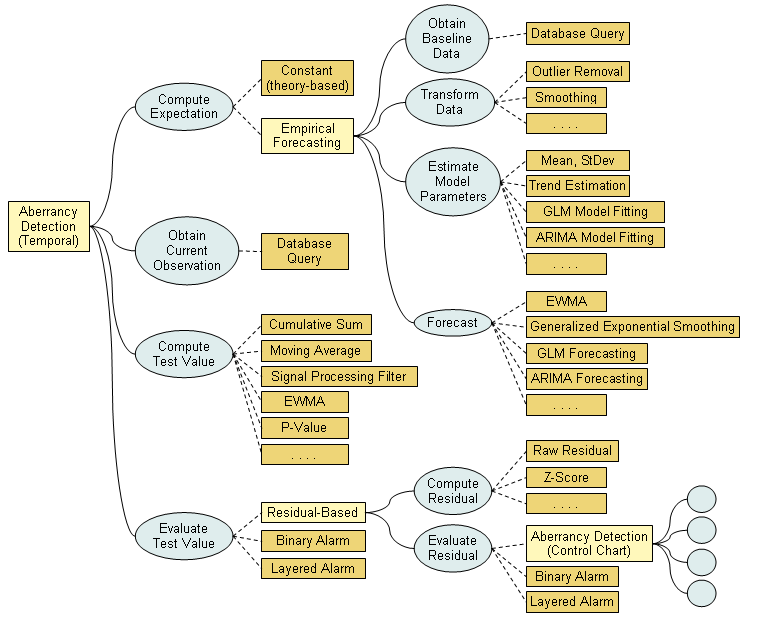General task structure of temporary aberrancy detection

Temporal algorithms are represented as instances of a task-decomposition method (denoted on the graph as Temporal Aberrancy Detection) that performs the task of detecting aberrations in the surveillance data by decomposing this task into four subtasks (ellipses): Compute Expectation, Obtain Current Observation, Compute Test Value, and Evaluate Test Value. Each of these tasks can be accomplished by one or more eligible methods (shown as boxes). For example, Obtain Current Observation is a straightforward step that is typically performed by querying a database. Multiple methods can be used for the Compute Test Value task. While some of them accomplish their task directly (primitive methods shown as dark rectangles), others can further decompose a task into subtasks and delegate subtask execution to other methods (task-decomposition methods shown as light rectangles). For example, the Evaluate Test Value task, which is responsible for generating alarms, can be accomplished directly by comparing an observed value to an expected value using a predefined threshold (primitive method Binary Alarm), or by passing the residual of such a comparison through a control chart (task-decomposition method Residual-Based). Some of the methods can be used for more than one task. For example, the exponentially weighted moving average (EWMA) method can be used as a forecasting technique or to compute test values.
← Back to Models